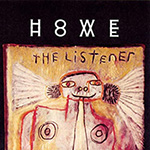Acapella thus generally favor 'conventional' 1" fabric domes without compression chamber. That's true also for the High BassoNobile whose MkII version gained a new tweeter tweaked for even lower distortion. Additionally its horn coupling and throat interactions were further locked in by extensive listening and parallel measurement sessions. Like the woofer, this Acapella-exclusive tweeter is sourced from the Norwegian experts at SEAS. Their bass driver continues the theme of classic membranes. They champion treated paper sandwich cones and load into individual chambers which bracket the horn. The crossover sits behind the tweeter. This filter too was revisited to expand its footprint. That relocated its second half into the plinth. Both network branches house in their own sealed areas. That avoids the high-pressure torture chambers of the woofers so shields them from microphony.

Rudolph remained stumm on further filter details. I only learn that all hookup wiring is their own pure silver cabling to explain the 'High' prefix. That's reserved for the company's high-zoot versions. Here BassoNobile doesn't even have a standard alternative. It's always… um, high. So, new drivers, new filter. What about the box? Aside from revisited braces, reflectors and panel dampers plus "cascaded support for the woofers and tweeter", the design team further worked on suppressing resonances. Aiming at the same is their traditional material mix for the 30-50mm thick panels. They combine Ply, MDF and acrylic in a constrained layer matrix whose dissimilar transmission speeds eliminate phantom sound sources from unwanted vibrations. The outer acrylic layer has the highly desirable side benefit of more easily polishing out eventual scratches than thin lacquer would. À propos skins, aside from classic high-gloss black or white, other colors and veneers are possible. Even for the horn color the client has broad options.
How to kick off my auditioning parcours? Easy. With a name like BassoNobile, I'd first look at bass. That was ace indeed because it married virtues which rarely want to come together. I've encountered similar in my career only twice or thrice before. Relative to ultimate reach and assertiveness, a €27'000 Ascendo Live will keep pace but being active, its target audience differs. In the passive sector of equivalent bass, Focal's Maestro Utopia Evo comes to mind but for an extra €20'000. Let's comb the checklist box by box. On output Acapella's bass played it linear if perhaps a finger's width more energetic than 100% neutral. That was perfect particularly in my 40m² space which sucks out some energy where other rooms add peaks. It causes neutral speaker like my €40K Blumenhofer Gran Gioia 2×10 to crack hard but go a bit lean and possibly too cracking for some. The High BassoNobile meanwhile fit like fist on eye. It was perfectly balanced from the lowest sub bass to the upper bass. The implication is obvious. This speaker needs some space to blossom. Rooms less than 25-30m² will balk, those of double or triple the footage breathe easy.
Equally crystal was that this Acapella had half to a full octave more extension than my Blumenhofer. That prioritizes efficiency over absolute reach to still play a bit louder with matched signal voltage. Acapella's bass mastery naturally didn't just factor with boombastic-funtastic fare but spaciousness. This already made a difference with the Baroque collection of Stille Klagen as captured in famed quality in a church. The High BassoNobile MkII transported me into a more capacious venue than I was used to. But bombastic also was on the main menu. Chef's special, too. One of my standard torture tracks for that is "F_ck back" from Burnt Friedman & The Nu Dub Players.

 The last time I got clobbered this comprehensively and dynamically unrestrained was by the pugilist knuckles of the aforementioned Ascendo. While my Blumenhofer put more edge on the synth bass, the Acapella played it a tad softer but with greater mass. Yet this speaker could and wanted to do more. That was about maximum differentiation of all musical goings-on to include the lot. Defined but never too dry or even haggard, double basses appeared self evident and free with wonderful string growl.
The last time I got clobbered this comprehensively and dynamically unrestrained was by the pugilist knuckles of the aforementioned Ascendo. While my Blumenhofer put more edge on the synth bass, the Acapella played it a tad softer but with greater mass. Yet this speaker could and wanted to do more. That was about maximum differentiation of all musical goings-on to include the lot. Defined but never too dry or even haggard, double basses appeared self evident and free with wonderful string growl.
Try Howe Gelb's "Piango" from The Listener or the played-to-death hifi show standard "Sunrise" by Norah Jones. The special attraction here was the brilliant combination of substance and definition. Most speakers trend one way or the other so either do it nicely juicy but a tick soft or bone dry but a tad wiry. Acapella had the ingenious combination. Blame sufficient cone surface in sealed but voluminous enclosures. High BassoNobile? Nomen est omen.